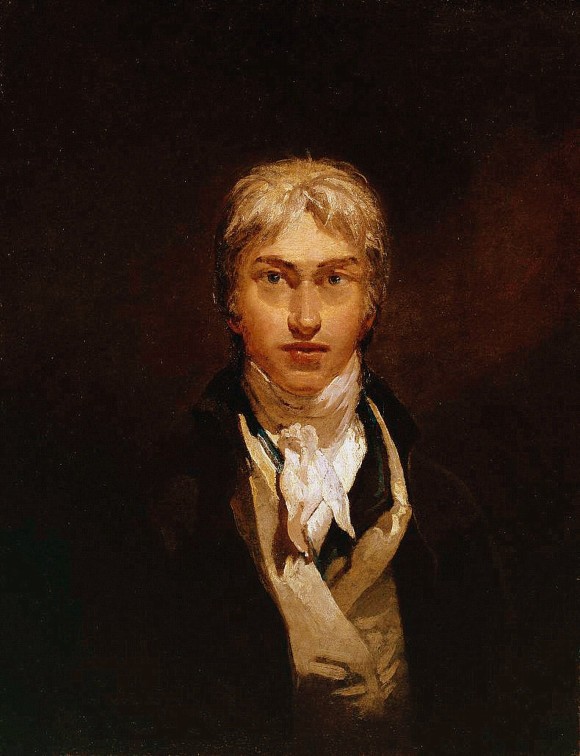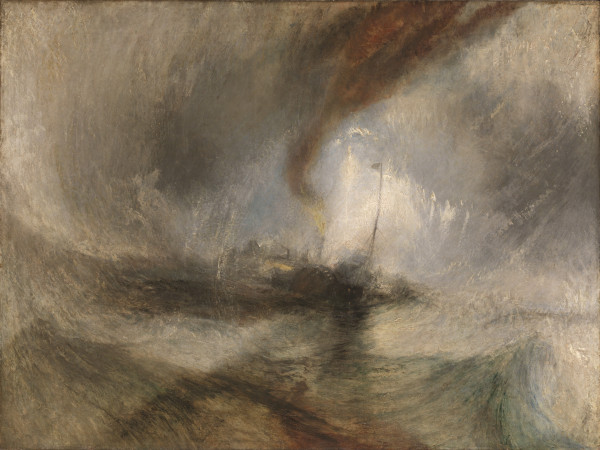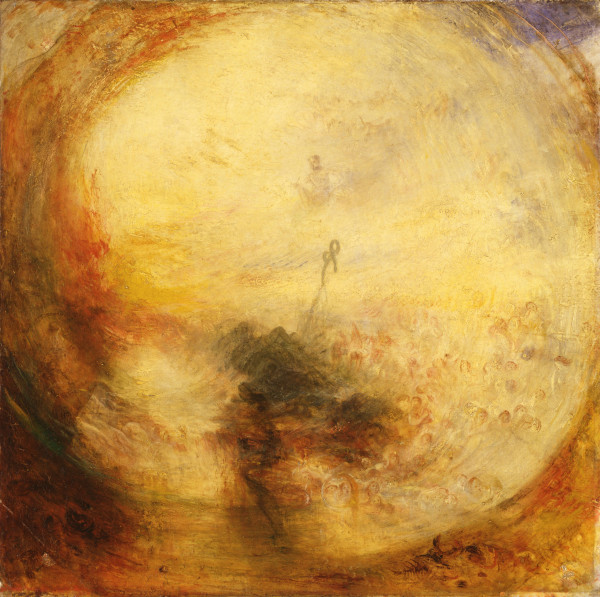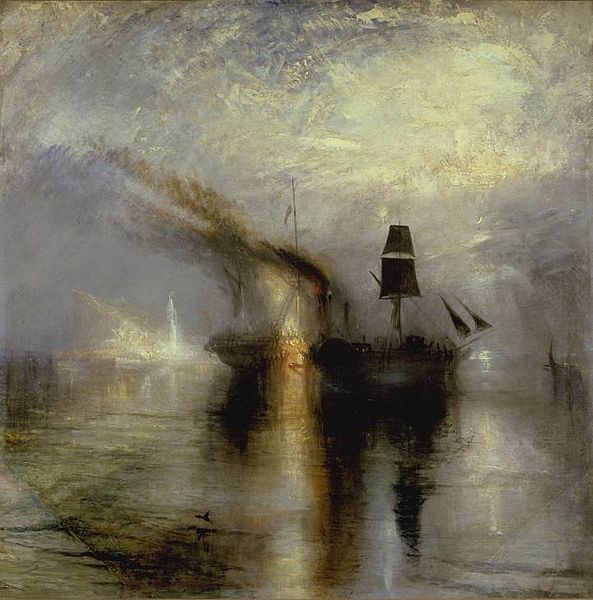Joseph Mallard William Turner (1775-1851), the illustrious painter, is the subject of an exhibition at the Art Gallery of Ontario which runs until January 31, 2016. J.M.W. Turner: Painting Set Free, an illuminating tribute to a British master, is comprised of more than 50 paintings on loan from Tate Britain. Nearly all of them were produced after he was 60, the most vigorous and experimental phase of his career.

Fascinated by the magical effects of light and mesmerized by the moods of variations in weather, Turner painted landscapes and seascapes in both watercolor and oil. Restless and always in experimental mode, he pushed the boundaries of his craft to new heights.
Influenced by Dutch and French masters like Albert Cuyp and Claude Lorrain, he was a forerunner of Impressionism. And so it’s no surprise to see a canvas by Claude Monet gracing a wall.
Arguably the greatest watercolorist of all time, Turner’s mastery of the form is revealed in one of his early works, South West View of a Gothic Abby (1800). It was only toward the close of his life that he turned to the medium of oil.

After 1835, his works were vividly colored, with bold motifs and innovative designs. Probably in response to the Industrial Revolution, which drove country folk to the cities and spawned a bleak landscape of belching factory chimneys, Turner devoted himself to the exploration of the natural world.
Nonetheless, he maintained a keen interest in the maritime lore of steam boats and whalers. And because he was an inveterate traveller who enjoyed his sojourns in the Italian states, he incorporated themes from classical history, religion and mythology into some of his paintings.
Turner’s trips to Switzerland were a source of inspiration, too, judging by two watercolors — The Blue Rigi: Sample Study and The Pass of the Splugen, both of which he finished in 1841. These paintings of misty mountains are so muted as to be indistinct. But this is what Turner strove for. “Indistinctiveness is my forte,” he said.
Venice also played a role in moulding his unmistakable style. As he gazed upon the Adriatic coast, he developed an obsession with dissolving light and atmospherics, as Venice at Sunrise from Hotel Europa suggests. Years later, as he lay on his death bed, he supposedly said, “The sun is God.”
For Turner, light was a miraculous phenomenon — producing color, sculpting forms, generating mood and revealing the infinite beauty and horror of nature.

These qualities are found in abundance in splendid paintings such as Snow Storm — Steam-Boat off a Harbour’s Mouth, which portrays a flimsy ship lashed by menacing waves; Peace — Burial at Sea, which is eerie and powerful; Light and Color, which evokes a biblical flood through a spinning vortex; Waves Breaking on a Lee Shore at Margate and Rough Sea with Wreckage, which celebrate nature in the raw, and Norham Castle: Sunrise, which depicts a building virtually melting under defuse sunlight.

Turner was an original, an innovator who was not afraid to follow his instincts and flout the status quo. And because he was so imaginative and fearless, he crafted an art form that has endured and still inspires awe and admiration.